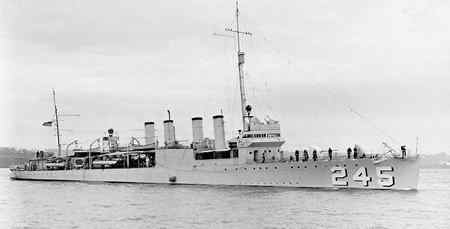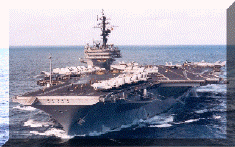 |
A Place Called
YORKSHIP
The Ships of New York Shipbuilding Co. |
| |
Last Updated:
31
October 2018 |
Jump to Ship Tables
Between its founding in 1899 and its closing in
1967, The New York Shipbuilding Corporation built 656 vessels for
the United States Navy, the American Merchant Marine, the Coast
Guard, and assorted other concerns. Their histories--heroic,
tragic, or merely pedestrian--are part of its history. These
ships were the yard's contribution to the defense of the nation
in a century of war and the vitality of the nation in a century
of economic growth. The fleet includes cruisers and battleships,
aircraft carriers and submarines, tankers and colliers, cargo
steamers and ferryboats, and more. At its peak during World War
II, NYSB was the largest and most productive shipyard in the
world.
The many notable vessels include:
- Battleships BB-31 (later AG-16) Utah
(contract 80) and BB-37 Oklahoma
(contract 130), both sunk by Japanese forces on December
7, 1941, in Pearl Harbor. Oklahoma was righted and refloated
in 1943, decommissioned in 1944, and sold for scrap in 1946 to a firm in
Oakland, California. She parted her tow line and sank to the bottom of
the Pacific on 17 May 1947, 540 miles from Hawaii. The rusting hulk of Utah,
tomb to an unknown number of dead, still rests in the mud near Ford
Island.
 DD-245 Reuben James
(contract 234), a Clemson-class "four-stacker"
destroyer built in 1919. Reuben James was the first U.S. Navy
ship lost to hostile action in World War II, torpedoed 31 October 1941
(five weeks before Pearl Harbor) by U-552 while on convoy
escort duty south of Iceland. One hundred fifteen members of her crew
perished. The loss outraged the nation, and the folk group The Almanac
Singers--whose members included Pete Seeger and Woody Guthrie--wrote and
recorded a passionately patriotic tribute, "The
Ballad of the Reuben James," to the tune of "Wildwood Flower."
DD-245 Reuben James
(contract 234), a Clemson-class "four-stacker"
destroyer built in 1919. Reuben James was the first U.S. Navy
ship lost to hostile action in World War II, torpedoed 31 October 1941
(five weeks before Pearl Harbor) by U-552 while on convoy
escort duty south of Iceland. One hundred fifteen members of her crew
perished. The loss outraged the nation, and the folk group The Almanac
Singers--whose members included Pete Seeger and Woody Guthrie--wrote and
recorded a passionately patriotic tribute, "The
Ballad of the Reuben James," to the tune of "Wildwood Flower."- SS-582 Bonefish
(contract 515), a Barbel-class fleet submarine launched 22
November 1958. Bonefish was the last diesel-electric boat
built for the U.S. Navy. It served for thirty years, until 24 April
1988, when a fire broke out in a battery compartment while the vessel
was operating submerged. The crew surfaced and abandoned ship, and the
badly damaged Bonefish was subsequently decommissioned and
scrapped.
- N.S. Savannah
(contract 529), the first nuclear-powered commercial vessel,
launched 21 July 1959.. The elegant 596-foot, 10,000dwt cargo liner was
a demonstration project of the United States Maritime Administration,
which operated the vessel for ten years (1962-1972). Laid up and
defueled, she sat in the James River Reserve Fleet near Newport News,
VA, for more than a decade. She is presently in Norfolk awaiting a
decision by MARAD on a decommissioning/decontamination plan.
 CVA-63 Kitty
Hawk (contract 514), a
1062-foot aircraft carrier displacing more than 80,000 tons, launched 21
May 1960. The largest ship ever built in Camden (in a dry dock built
especially for her), Kitty
Hawk.is the last of the thirteen Yorkship-built
carriers still afloat. Forward deployed at its homeport of Yokosuka,
Japan, she currently carries the eight squadrons of Carrier Air Wing
Five (CVW-5).Kitty Hawk is scheduled to be retired in 2008,
replaced by CVN 77 George H. W. Bush.
CVA-63 Kitty
Hawk (contract 514), a
1062-foot aircraft carrier displacing more than 80,000 tons, launched 21
May 1960. The largest ship ever built in Camden (in a dry dock built
especially for her), Kitty
Hawk.is the last of the thirteen Yorkship-built
carriers still afloat. Forward deployed at its homeport of Yokosuka,
Japan, she currently carries the eight squadrons of Carrier Air Wing
Five (CVW-5).Kitty Hawk is scheduled to be retired in 2008,
replaced by CVN 77 George H. W. Bush.- CL-46 Phoenix (contract
416), a Brooklyn-class light cruiser launched 13 March 1938. Phoenix
earned nine battle stars during World War II, surviving
the raid on Pearl Harbor and taking part in the battles of Leyte
Gulf, Bataan, and Corregidor. Decommissioned in 1946, the Phoenix
was transferred to Argentina in 1951, eventually being commissioned as
the General Belgrano. During the Falklands War, she was
torpedoed and sunk by the British nuclear attack submarine HMS
Conqueror.
- In July 1940, S.S.
American Legion (contract 242) was dispatched by
President Roosevelt on a rescue mission to Petsamo, Finland, where it
embarked a manifest of 897 refugees that included young comedic pianist
Victor Borge, Norwegian Crown Princess Martha and her children, and
former US ambassador to Norway Mrs. J. Borden Harriman. Her cargo
included a Swedish 40mm Bofors anti-aircraft gun, which became the
prototype for thousands of guns employed by the Navy throughout the war.
Departing Petsamo August 16, SS American Legion was the last
neutral vessel allowed to leave Northern Europe.
- DD-61 Jacob
Jones (contract 150), a
Tucker-class destroyer launched 29 May 1915, and DD-130 Jacob
Jones (contract 215), a Wickes-Tattnall class destroyer
launched 20 November 1918. The first Jacob Jones was torpedoed
by Hans Rose's U-58 off the Isles of Scilly on 6 December 1917, and sank
eight minutes later with 64 men still aboard. The second Jacob
Jones was torpedoed by U-578 off Cape May, New Jersey, on 28
February 1942. Only 12 survivors were found; most of the crew was killed
by the initial explosions (the detonation of the ship's magazine sheared
off the bow), and the rest perished in the water.
 AOE-2
Camden (contract
542), a 796-foot fast combat support ship of the Sacramento
class. The largest combat logistics ships in the US Navy, the AOE
vessels combine the functions of three logistic support ships in one
hull - fleet oiler (AO), ammunition ship (AE), and refrigerated stores
ship (AF). Like Sacramento, the Camden was powered
by one of the engine plants originally intended for the Iowa-class
battleship BB-66 Kentucky, which was cancelled in 1947 when
72.1% complete. Camden was assigned to the Pacific Fleet and
homeported at Bremerton, Washington. Decommissioned in October 2005
after 38 years of service, she was scrapped in Brownsville, TX, in 2007.
AOE-2
Camden (contract
542), a 796-foot fast combat support ship of the Sacramento
class. The largest combat logistics ships in the US Navy, the AOE
vessels combine the functions of three logistic support ships in one
hull - fleet oiler (AO), ammunition ship (AE), and refrigerated stores
ship (AF). Like Sacramento, the Camden was powered
by one of the engine plants originally intended for the Iowa-class
battleship BB-66 Kentucky, which was cancelled in 1947 when
72.1% complete. Camden was assigned to the Pacific Fleet and
homeported at Bremerton, Washington. Decommissioned in October 2005
after 38 years of service, she was scrapped in Brownsville, TX, in 2007.- BB-57 South
Dakota (contract 421), the
prototype of a four-ship class of 680-foot, 35000dwt fast battleships,
launched 7 June 1941. This highly-decorated vessel (thirteen Battle
Stars and five other commendations) took 42 hits while helping sink the
Japanese battleship Kirishima at the Battle of Guadacanal in
November 1942, and survived to take part in the final bombardment of
Tokyo 15 August 1945. Scrapped in 1962, she is remembered by a memorial
in Sioux Falls, South Dakota. Sister ships Alabama and Massachusetts,
built elsewhere, survive as floating museums.
Ship Tables - By Type:
Other Ship Information
 to previous
page
to previous
page
 your
Yorkship memories to Michael
Kube-McDowell, Class of '68
your
Yorkship memories to Michael
Kube-McDowell, Class of '68


 DD-245 Reuben James
(contract 234), a Clemson-class "four-stacker"
destroyer built in 1919. Reuben James was the first U.S. Navy
ship lost to hostile action in World War II, torpedoed 31 October 1941
(five weeks before Pearl Harbor) by U-552 while on convoy
escort duty south of Iceland. One hundred fifteen members of her crew
perished. The loss outraged the nation, and the folk group The Almanac
Singers--whose members included Pete Seeger and Woody Guthrie--wrote and
recorded a passionately patriotic tribute, "The
Ballad of the Reuben James," to the tune of "Wildwood Flower."
DD-245 Reuben James
(contract 234), a Clemson-class "four-stacker"
destroyer built in 1919. Reuben James was the first U.S. Navy
ship lost to hostile action in World War II, torpedoed 31 October 1941
(five weeks before Pearl Harbor) by U-552 while on convoy
escort duty south of Iceland. One hundred fifteen members of her crew
perished. The loss outraged the nation, and the folk group The Almanac
Singers--whose members included Pete Seeger and Woody Guthrie--wrote and
recorded a passionately patriotic tribute, "The
Ballad of the Reuben James," to the tune of "Wildwood Flower." CVA-63 Kitty
Hawk (contract 514), a
1062-foot aircraft carrier displacing more than 80,000 tons, launched 21
May 1960. The largest ship ever built in Camden (in a dry dock built
especially for her), Kitty
Hawk.is the last of the thirteen Yorkship-built
carriers still afloat. Forward deployed at its homeport of Yokosuka,
Japan, she currently carries the eight squadrons of Carrier Air Wing
Five (CVW-5).Kitty Hawk is scheduled to be retired in 2008,
replaced by CVN 77 George H. W. Bush.
CVA-63 Kitty
Hawk (contract 514), a
1062-foot aircraft carrier displacing more than 80,000 tons, launched 21
May 1960. The largest ship ever built in Camden (in a dry dock built
especially for her), Kitty
Hawk.is the last of the thirteen Yorkship-built
carriers still afloat. Forward deployed at its homeport of Yokosuka,
Japan, she currently carries the eight squadrons of Carrier Air Wing
Five (CVW-5).Kitty Hawk is scheduled to be retired in 2008,
replaced by CVN 77 George H. W. Bush. AOE-2
Camden (contract
542), a 796-foot fast combat support ship of the Sacramento
class. The largest combat logistics ships in the US Navy, the AOE
vessels combine the functions of three logistic support ships in one
hull - fleet oiler (AO), ammunition ship (AE), and refrigerated stores
ship (AF). Like Sacramento, the Camden was powered
by one of the engine plants originally intended for the Iowa-class
battleship BB-66 Kentucky, which was cancelled in 1947 when
72.1% complete. Camden was assigned to the Pacific Fleet and
homeported at Bremerton, Washington. Decommissioned in October 2005
after 38 years of service, she was scrapped in Brownsville, TX, in 2007.
AOE-2
Camden (contract
542), a 796-foot fast combat support ship of the Sacramento
class. The largest combat logistics ships in the US Navy, the AOE
vessels combine the functions of three logistic support ships in one
hull - fleet oiler (AO), ammunition ship (AE), and refrigerated stores
ship (AF). Like Sacramento, the Camden was powered
by one of the engine plants originally intended for the Iowa-class
battleship BB-66 Kentucky, which was cancelled in 1947 when
72.1% complete. Camden was assigned to the Pacific Fleet and
homeported at Bremerton, Washington. Decommissioned in October 2005
after 38 years of service, she was scrapped in Brownsville, TX, in 2007.![]() your
Yorkship memories to Michael
Kube-McDowell, Class of '68
your
Yorkship memories to Michael
Kube-McDowell, Class of '68